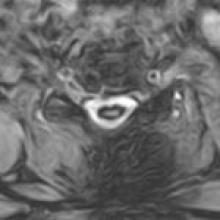July 2021
A 55-year-old male patient with gradually progressive shortness of breath seeks medical attention. Relevant personal antecedents include a known diagnosis of type I neurofibromatosis, difficulty walking, depression, and scoliosis surgery at 13 years old.







